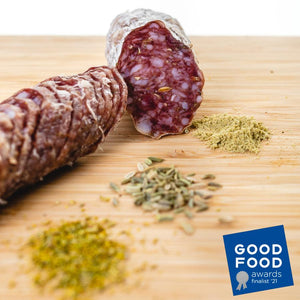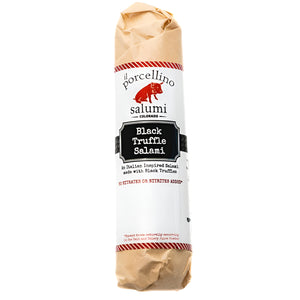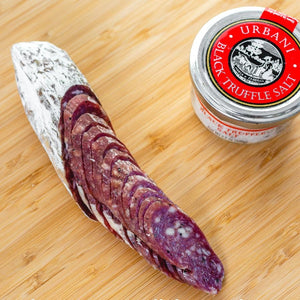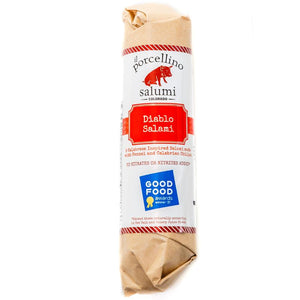Coppa is one of the best dry-cured meats you’ll ever eat. The muscle is beautifully marbled and very tender, which makes it absolutely delicious. There’s a reason it’s nicknamed the “money muscle.” It’s a prized cut, and it can be hard to find this muscle raw. However, dry-cured coppa is common, and if you haven’t tried it, add it to your food bucket list!
It took us years to perfect our coppa recipe. We tweaked it and tried variations at our retail store and deli until we got it just right. We pride ourselves on our coppa recipe and are proud that it has won two national awards: the 2017 Good Food Award and the 2020 Charcuterie Masters Grand Champion Award.
Finally, il porcellino salumi’s Coppa will be available for wholesale distribution this June 2021, after years of development. We really couldn’t be more proud of this product. Look for it on charcuterie boards and retail stores around Colorado and beyond soon. From hog processing to packaging, every step is handcrafted.
Below are details about coppa, the muscle cuts that make it, and how we’ve perfected the il porcellino salumi coppa.
What is Coppa?
Coppa is a traditional Italian dry-cured pork product. It’s a whole muscle product meaning it’s not ground before it’s stuffed into casings, so it’s similar to a dry-cured ham or prosciutto in that context. It’s believed to have originated in Campania, which is a southern region in Italy.

Coppa can get confused with its cousin, capicola, a cured and cooked version of the same muscle.

Capicola is more of a deli meat used on Italian-style hoagie sandwiches and is one of the three types of meat found in our “Hoggie Sandwich.” To make it more confusing, capicola is sometimes spelled as capocollo, capacola, capacolla, and even more depending on who you’re talking to or where you are.
Personally, I like calling coppa “money meat” because it is one of the most profitable muscles of the pig, and when it’s cured properly, it melts in your mouth!
What cut of meat is Coppa?
The meat is a collection of muscles that run from the neck into the shoulder. Think of it as an extension of the loin. It gets its name based on how it’s processed because “capo” refers to the head and “collo” is the shoulder. Butchers often call it the collar muscle.
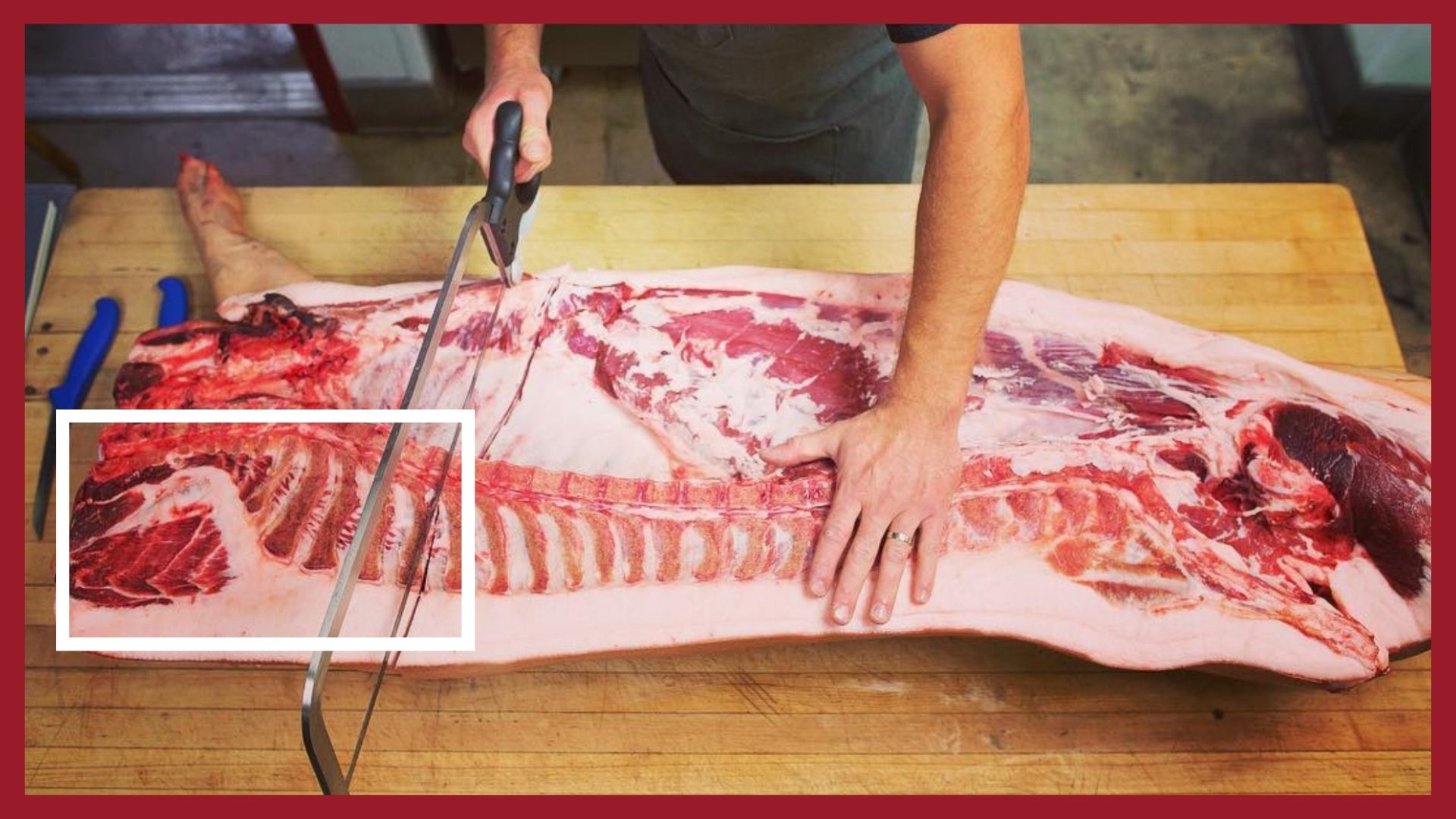
Because it comes from the shoulder and neck area, it’s fairly fatty, and the muscle gets a lot of use. When you combine the well-used and fatty muscle with a quality heritage breed hog, you get a very tender and flavorful cut of meat. These elements and the fact that you can only get two out of one pig make it such a prized cut.
The cut is also what separates it from other whole-muscle dry-cured products like prosciutto. For instance, prosciutto comes from the pig’s hind leg, so the fat ratio and muscle are different, leading to different flavor profiles and textures.
il porcellino salumi’s Award-Winning Coppa
We start by processing beautiful Berkshire heritage breed pigs from Red Top Farms or Pederson’s Farms. The muscle cures with our proprietary spice blend for approximately 18 days under refrigeration.

After about 18 days of curing, we rinse off the cure spice and rub them with a different proprietary spice blend before stuffing them into a beef casing. Then we tie them with netting and hang them to dry in our climate-controlled dry cure rooms for approximately 75 days.
A lot of charcuterie producers either make a sweet coppa or a spicy coppa. We combined the best of both worlds to yield an award-winning sweet and spicy product.
How to serve coppa?
Coppa is pretty versatile and how you serve or use it is your preference. It usually comes sliced thin but if you’re doing it at home, slice it as thin as possible for the best flavor. Use a deli slicer if you have one.

You’ll often see it included on a charcuterie platter or used as a sandwich filling. You can wrap vegetables, seafood, and meats in it for cooking and include it on pizza, pasta, and salad. The sweet, spicy, and savory flavor goes well with fruit too.
Coppa-wrapped figs stuffed with gorgonzola cheese are one of the best things that you will ever taste! I recommend you put coppa on flatbreads or artisanal pizzas with something sweet and savory, and either goat cheese or fresh mozzarella.
I love a pizza with coppa, caramelized onions, fresh basil, fresh mozzarella, pistachios, and ripe peaches. It is the perfect flavor balance of sweet, spicy, and savory.
Another fun recipe is to fry thinly sliced Coppa until crispy, essentially creating a “coppa chip” or “coppa crisp.” This, in turn, can be used as a garnish in a salad with arugula, ripe cantaloupe, chevre, candied walnuts, and balsamic vinaigrette.
As you can tell, it’s quite versatile. But if you’re able to try a paper-thin slice by itself, do it. It will transport you directly to the heart of Southern Italy in Campania!



